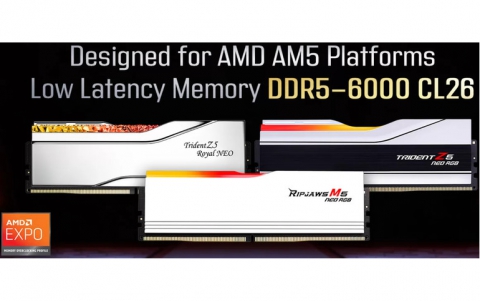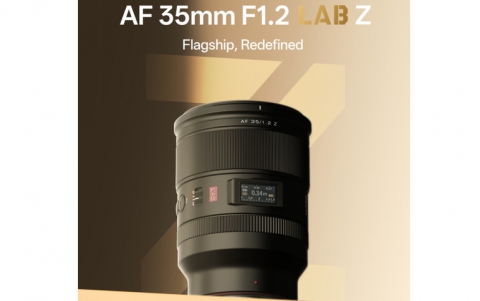
Atom disc may be the answer to storage explosion!
Each year between one and two billion gigabytes of information
are produced – more then 250Mb for each person on the planet. In fact, businesses alone store ten times more data today than three years ago.This demand for storage is expected to increase by 20 to 50 times over the next three years. If all of this data is to be useful, a new format for mass storage needs to be found...
The article continues: "...Approaches to finding a new means of storing digital information are diverse. Some of the more promising involve radically improving the materials used in magnetic and optical technologies, while other researchers are investigating a more fundamental solution: storing data at an atomic level in silicon.
Current magnetic storage devices, such as computer hard discs, use magnets to organise ‘grains’ on the rotating surface of the disc. Nanomagnetics hopes to take this technology to a new level. Started in 1999, the company is based on research carried out at the Universities of Bath and Bristol.
The secret of the Nano-magnetics approach is to make the grains out of a new material that is both smaller and more uniform than the magnetic grains that are currently used. It does this by growing nano-scale protein spheres.The grains are then built-up inside the spheres, limiting their size and ensuring they all have the same shape.
This means that they can be packed more tightly increasing both the amount of information that can be stored on the surface of a disc and the time taken to read or write information contained on the disc.
However, magnetic drives are essentially fixed devices that cannot easily be removed or swapped between computers or home entertainment systems.
For those applications we currently use compact and digital versatile discs (CDs and DVDs). Polight Technologies have taken a different approach from Nanomagnetics and tried to solve the question of where these light-based forms of storage go next. As a spin-out from the University of Cambridge the company has grown quickly over the last year and now employs 19 people.The research team has developed a new class of material, called Holonides, which they hope will replace the polymers used today. Holonides have unique properties when exposed to light under specific conditions.
Current CDs and DVDs store information in a single track, much like an old vinyl record.What is special about Holonides is that they allow the data to be written in three dimensions, effectively making a hologram and thus storing far more information – up to 2,000 times more than a current DVD and, critically, more than enough for 50 movies in the high-definition TV format that will soon be the new standard or the terabyte needed for films in cinemas.
Michael Ledzion, CEO of Polight, explains: “The Professor and PhD student behind the idea were examining the effects of light on these materials.Then they thought of holograms and the lights came on!” The Polight disc can be easily transported, just like a DVD, and is robust making it ideal for long-term storage of data and archiving. Polight also intends to release a rewritable version of their product that Ledzion believes will be a unique proposition in the market.
What is more, the company hopes that the first drives will be released in under two years and is actively searching for partners to manufacture them.
One of the more long-term prospects for storage is at the atomic level. Researchers at the University of Wisconsin have been working on a process to arrange atoms in order to record information by using a scanning tunnelling electron microscope. Bits of information are recorded by the presence, or absence, of atoms of silicon on a track.
The size of atoms means that a large amount of information can be stored in a small amount of space. Indeed, as far back as 1959, Richard Feynman estimated that all of the information that has ever been written could be held in a block of material just two-hundredths of an inch square, if it could be written with atoms.
However, a practical implementation of this technology is still several years away, if not decades.The importance of the current research is to prove that such an approach is theoretically possible and to highlight the issues that still need to be solved. Ultimately, if we are going to store all of the data being created, there is little doubt that we will have to shrink it to just such small sizes..."
Current magnetic storage devices, such as computer hard discs, use magnets to organise ‘grains’ on the rotating surface of the disc. Nanomagnetics hopes to take this technology to a new level. Started in 1999, the company is based on research carried out at the Universities of Bath and Bristol.
The secret of the Nano-magnetics approach is to make the grains out of a new material that is both smaller and more uniform than the magnetic grains that are currently used. It does this by growing nano-scale protein spheres.The grains are then built-up inside the spheres, limiting their size and ensuring they all have the same shape.
This means that they can be packed more tightly increasing both the amount of information that can be stored on the surface of a disc and the time taken to read or write information contained on the disc.
However, magnetic drives are essentially fixed devices that cannot easily be removed or swapped between computers or home entertainment systems.
For those applications we currently use compact and digital versatile discs (CDs and DVDs). Polight Technologies have taken a different approach from Nanomagnetics and tried to solve the question of where these light-based forms of storage go next. As a spin-out from the University of Cambridge the company has grown quickly over the last year and now employs 19 people.The research team has developed a new class of material, called Holonides, which they hope will replace the polymers used today. Holonides have unique properties when exposed to light under specific conditions.
Current CDs and DVDs store information in a single track, much like an old vinyl record.What is special about Holonides is that they allow the data to be written in three dimensions, effectively making a hologram and thus storing far more information – up to 2,000 times more than a current DVD and, critically, more than enough for 50 movies in the high-definition TV format that will soon be the new standard or the terabyte needed for films in cinemas.
Michael Ledzion, CEO of Polight, explains: “The Professor and PhD student behind the idea were examining the effects of light on these materials.Then they thought of holograms and the lights came on!” The Polight disc can be easily transported, just like a DVD, and is robust making it ideal for long-term storage of data and archiving. Polight also intends to release a rewritable version of their product that Ledzion believes will be a unique proposition in the market.
What is more, the company hopes that the first drives will be released in under two years and is actively searching for partners to manufacture them.
One of the more long-term prospects for storage is at the atomic level. Researchers at the University of Wisconsin have been working on a process to arrange atoms in order to record information by using a scanning tunnelling electron microscope. Bits of information are recorded by the presence, or absence, of atoms of silicon on a track.
The size of atoms means that a large amount of information can be stored in a small amount of space. Indeed, as far back as 1959, Richard Feynman estimated that all of the information that has ever been written could be held in a block of material just two-hundredths of an inch square, if it could be written with atoms.
However, a practical implementation of this technology is still several years away, if not decades.The importance of the current research is to prove that such an approach is theoretically possible and to highlight the issues that still need to be solved. Ultimately, if we are going to store all of the data being created, there is little doubt that we will have to shrink it to just such small sizes..."


















